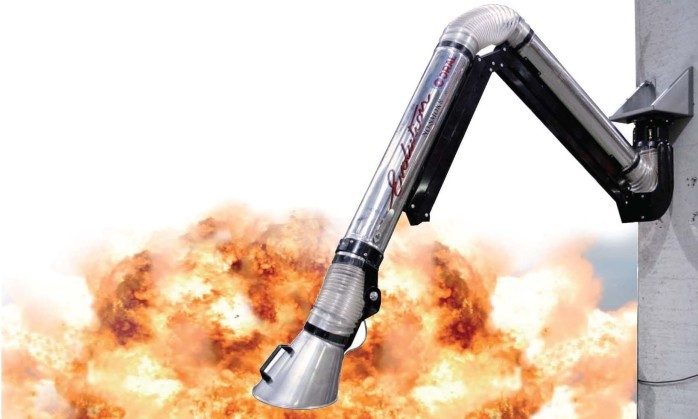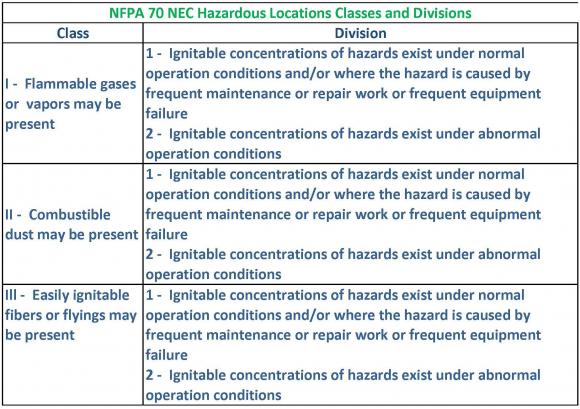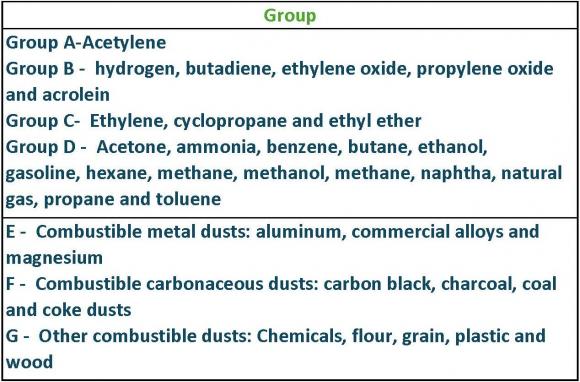Hazardous Locations HAZLOC Explained
Areas are divided into Class 1 Class 2, and Class 3. There are two divisions within each area.

Class, Division, and Groups Explained

Class I
Class I: Gases or vapors. Class I hazardous areas may contain flammable vapors or gases in quantities large enough to cause a fire or an explosion. Examples of these gases and vapors include hydrogen, carbon monoxide, and ethylene oxide.
Class II
Class II: Dust. Class II hazardous areas may contain combustible or conductive dust in quantities large enough to cause a fire or an explosion. Examples of these dusts include metal dusts such as aluminum dust or carbon-based dusts such as coal dust.
Class III
Class III: Fibers. Class III hazardous areas may contain fibers and small airborne parts in quantities large enough to ignite and cause a fire or an explosion. Examples of these include wood, plastic, and grain.
Division 1
Div. I High-Probability locations are defined as an area where the amount of combustible dust is either suspended in the air or accumulated on surfaces in a sufficient concentration to allow for ignition.
All day production would usually be Div. 1.
Division II
Div. II Low Probability locations are usually defined as maintenance areas, or intermittent production.
HAZLOC Groups Explained

Related Products
- Compact 110V Downdraft NFPA 660 Compliant
- Electric Vacuums for NFPA 660 Compliance
- Dust Collector with Explosion-Venting for Indoor Use
- Dust Collector for Heavy Odors and VOC
- Explosion-Proof Dust Collectors
- Explosion-Proof Vacuums | 3rd Party Certified
- Gun Range Vacuums
- HD Portable Dust Collector | Div. 1 Motor
- Intrinsically safe air-powered vacuums.
- Intrinsically Safe and Explosion Proof Air Vacuums
- StatMax Conductive Hose
- Vacuum Hose with Internal Ground Wire
- Vacuums for Additive Manufacturing
- Wet Collectors for Explosive Metal Dusts